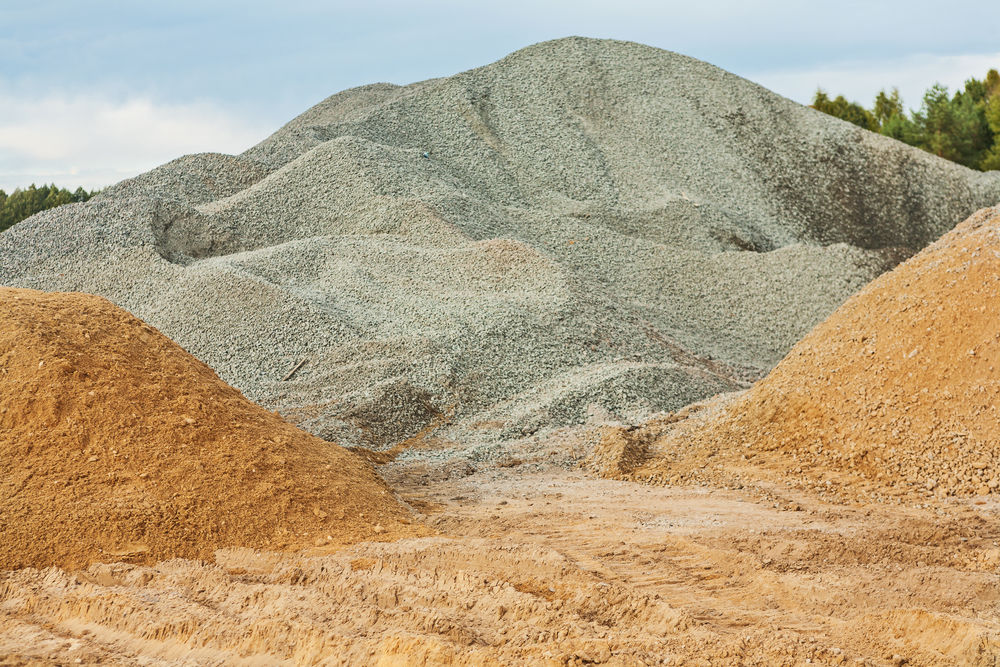The following is a list of common building materials in Kenya used for construction purposes to create structures and buildings. It includes manually and machine-cut stones, sand, fired bricks, metal, cement, concrete, wood, glass, bamboo, EPS panels, glazed ceramic tiles, and roofing sheets. The article highlights the uses, properties, and features of each material.
In Kenya, building materials refer to natural or man-made substances used to create structures and buildings. The choice of construction materials often depends on their cost and availability.
Building Materials in Kenya
Here are some common building materials used in Kenya:
Stone
This is one of the most common building materials in Kenya. There are two types of stones: manually cut stones, mostly used for foundations and load-bearing walls, and machine-cut stones, which have an even surface and save on time and labor costs.
Sand
This loose material, made from broken rocks, is one of the most popular construction materials in Kenya. It is used with cement and lime to make mortar for masonry work and plaster. Sand is also used in the production of glass and sandpaper.
Fired Bricks
Made from compressed clay, fired bricks are commonly used for constructing walls and arches as a substitute for stone. They can have hollow cavities to lighten them and hasten the drying process, and they are popular due to their fire resistance abilities.
Metal
Steel is the most popular metal for structural building due to its strength, flexibility, and long-lasting properties. It is commonly used to make reinforced concrete used as support for structures in buildings, dams, and bridges. Other metals, such as aluminum and copper, have also gained popularity due to their rust and corrosion resistance.
Cement
With about 6 billion tonnes manufactured annually, cement is easily the essential building material. It is used in masonry work as an adhesive to hold stones, bricks, and blocks in place and in plastering. The material is mixed with aggregate to form concrete, commonly used for building floors, bridges, dams, and roads.
Concrete
Made by combining cement, gravel, sand, and water, concrete is strong, durable, and the most used man-made building material globally. It has a high compressive but low tensile strength and must be reinforced using steel bars or rods.
Wood
This traditional building material is mainly used in paneling, flooring, and general finishing. It is also used to construct roofs, ceilings, doors and window frames, and exterior cladding. However, its use has been reduced due to rising costs and the threat of deforestation.
Glass
A modern architectural material, glass provides natural lighting while locking out undesirable weather elements. Modern technologies have enabled it to cover entire walls of a building with the support of some form of frame.
Bamboo
This fast-growing plant has a high strength-to-weight ratio and is useful for structures. It rivals concrete, brick, and wood in compressive strength and steel in tensile strength. Bamboo is mostly used in building houses, bridges, and scaffolding.
EPS Panels
Prefabricated building materials are gaining currency in Kenya. EPS panels involve making a building’s frame in a factory before transportation to a construction site for assembly. Prefab houses are easier, cheaper, and faster to construct than normal brick-and-mortar buildings.
Glazed Ceramic Tiles
These tiles are formed from a mixture of clay, sand, and natural additives molded into the desired shape and permanently hardened by heat. They commonly cover floors, walls, and surfaces such as countertops.
Roofing Sheets
These are the most common roofing products in Kenya due to their affordability.
In conclusion
Kenya has a wide range of building materials to choose from, both locally sourced and imported. The availability of these materials varies depending on the region and the intended use. It is important for individuals and developers to carefully evaluate the properties and cost of each material before making a decision.
While factors such as cost, durability, and availability are critical considerations, environmental impact, and sustainability must also be considered. As Kenya continues to experience rapid urbanization and economic growth, the demand for building materials is expected to increase, creating opportunities for local manufacturers and suppliers to expand and innovate their offerings.

